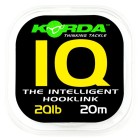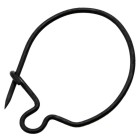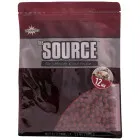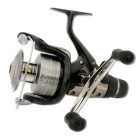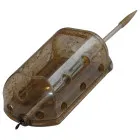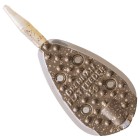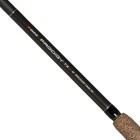Spring Tench Fishing
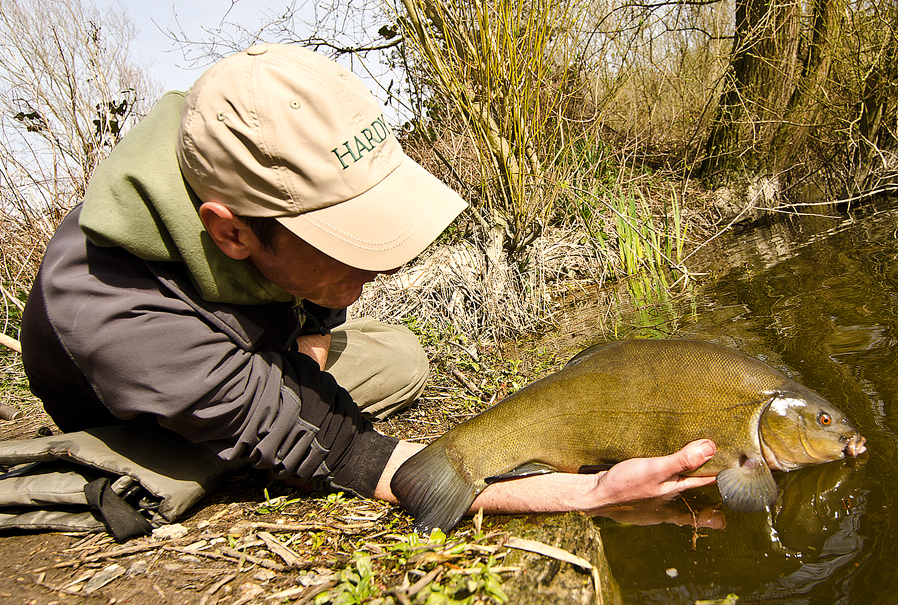

Tench supremo Gareth Goldson targets tench on two banker methods.
We’re now at that time of year where the green-flanked and red-eyed tench comes into the minds of many an angler up and down the country. Now is the time where the pretty and hard-fighting tench really does get on the feed after disappearing throughout the winter months. If you strike it lucky you can really have some fun with this species as they go on the feed and, unlike later in the summer, spring tench are a lot less wary.
To help you select a couple of different but similar methods to catch a green tinca we’ve enlisted the help of Grey’s Gareth Goldson, an expert tench catcher, with many double-figure specimens to his name. Not only do we have one of the country’s finest tench anglers to help you out, we’re also fishing arguably the finest tench waters in the country, Bawburgh Fishery near Norfolk – a venue that regularly throws up double-figure specimens every season, but also caters for anglers looking to catch a bag of smaller sized fish.
Although catching a double is every tench angler’s dream, this normally takes a lot of dedication, so today Gareth has selected of one of the complex’s smaller lakes, that gives him a chance of catching a few tench for the CFA cameras. Even so, at an average size of 5lb and the chance of a rogue double this certainly isn’t baby bashing.
There are many ways to skin a cat and today Gareth is selecting two similar but different methods that have never let him down over the years – both have accounted for memorable catches in the past and he trusts their effectiveness in almost all tench fishing scenarios.
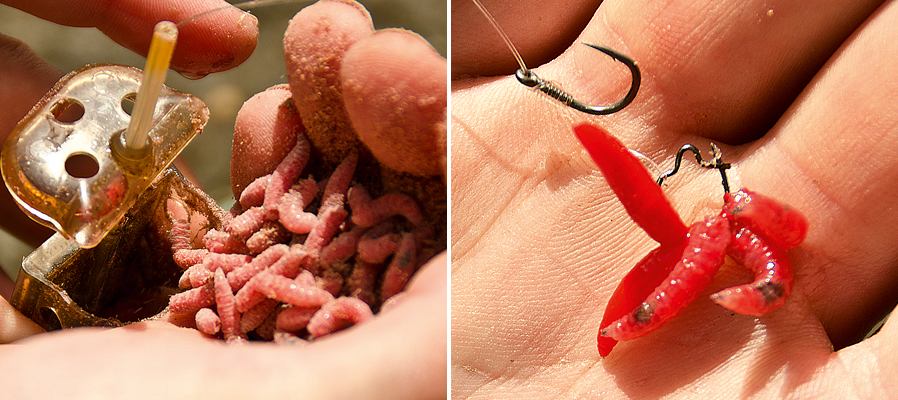
Rig 1 – Maggot Feeder Main line – 8lb mono Hook link – 10lb Korda IQ Feeder – Drennan Bolt Rig Maggot Feeder
The inline maggot-feeder rig is a tench classic. Gareth uses a 20cm hooklink of 10lb fluorocarbon; this may seem stiff but because he is using a maggot clip the maggots often mask the hook when using soft mono or braided hooklengths. The stiff properties of fluorocarbon stop this from happening.
On his maggot clip Gareth attaches two floating, fake red maggots and four or five real ones. He makes sure he checks his rig in the side before fishing – it should sink slowly to the bottom, with the two floating maggots taking away the weight of the clip and hook, giving a balanced rig that will easily enter a feeding tench’s mouth.
The long hooklength also gives Gareth an edge as this helps to prevent him bumping off fish at the net, which can often happen with a short hooklength and a heavy feeder.
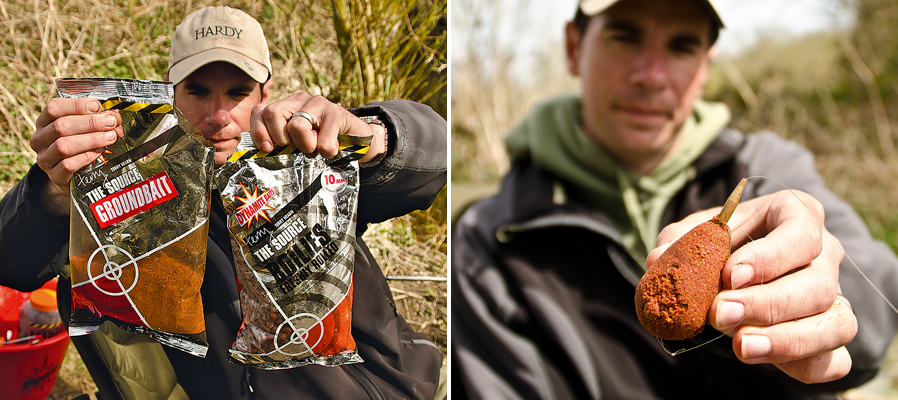
Rig 2 – Method Feeder Main line – 8lb mono Hook link – 6lb fluorocarbon Feeder – Drennan In-line Flat Method Feeder
The Method feeder is a truly universal rig, allowing you to catch a wide range of species, and tench in particular are suckers for it. Gareth says the Method allows him to have his hook bait right next to his feed and the 10mm boilie on top of a simple groundbait mix is like the cherry on top of a cake.
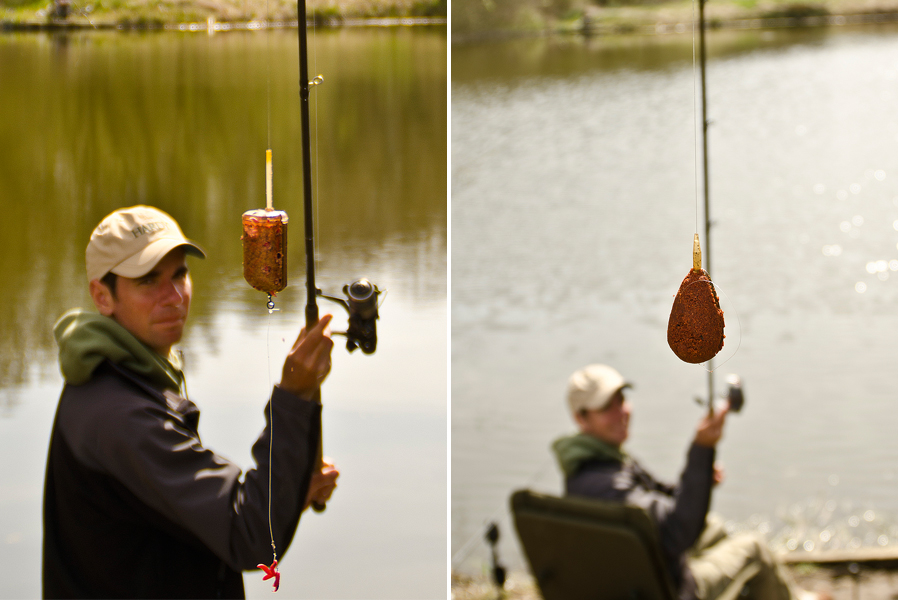
The Bait It doesn’t get any simpler, really; the maggot-feeder rig only utilises one bait – red maggots, which are arguably the finest tench bait ever – so why use anything else with this setup? However, Gareth likes to use The Source groundbait and 10mm boilies with his Method setup, but he doesn’t mix his groundbait with any particles, wanting his boilie to be the only food source available when the groundbait’s scent attracts fish into his swim.
The Session Gareth arrives before dawn to look for signs of tench; he feels this is the best time of day to do this and it’s very important to spot where the tench are rolling, as this is often the area where they’ll be feeding during the day. “Observation is up there with the most important aspects of fishing,” he explains. “I want to make sure I know where the fish are before wetting a line.”
After just a short time looking Gareth manages to spot a few tench rolling out in the middle of the lake, which, because of the water’s small size, is a manageable 30-yard chuck. He sets his rods at this distance and uses pole elastic and his rod clip to ensure he hits the same spot each time.
To start off the session Gareth introduces 20 maggot feeders full of red maggots, waiting 20 seconds after each cast for the maggots to leave the feeder. Then, once he is fishing, he casts every 20 minutes or so to keep his swim active and to attract fish down onto his bait.
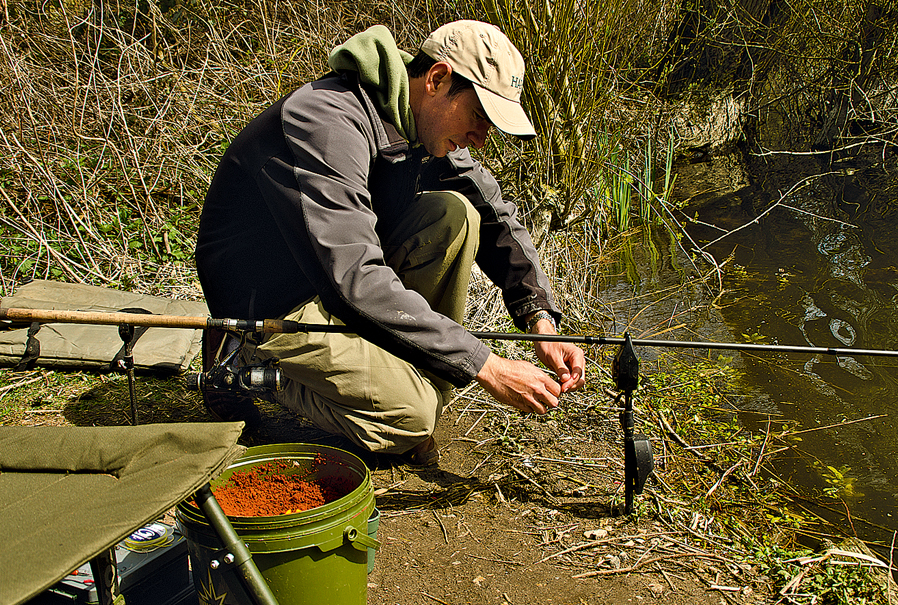
“A lot of anglers will bait heavily and then fish over the top of this, not introducing more feed through the day,” says Gareth. “You may catch a fish but you don’t know how much loose feed they have eaten before the fish picks up your bait. By feeding little and often I know that when I get a bite the fish hasn’t been bingeing on a ton of bait and I’ll have more chance of picking off extra tench, as they’re not full.
“With tench fishing I always go by the old adage of ‘the more you cast the more you catch’. I think that tench get tuned into the sound of the feeder hitting the water and they know that a pile of tasty red maggots are on their way down to them – this is most certainly the cast when early season tenching in May and June.”
With his maggot rig sitting over his baited area, Gareth casts his Method feeder rod seven or eight yards to the right, and for good reason. “I like to call this the dessert rod; it gives the tench a little present away from the main feed and I often find that I pick up the bigger fish from this rod. I think that the bigger fish sometimes shy away from a baited spot and the smaller fish bomb in and feed first. It always pays to fish a rod a few yards from your main area.”
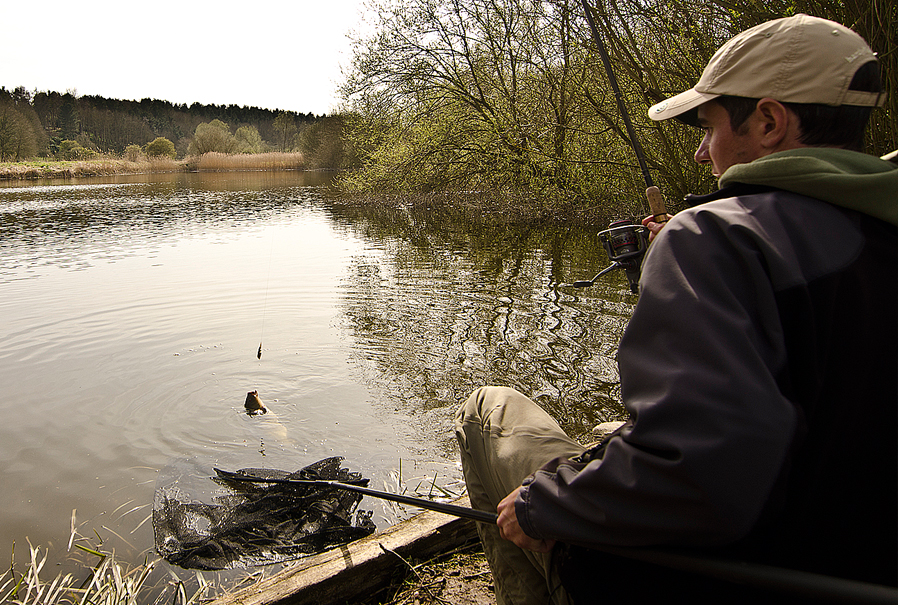
Gareth sets up his maggot-feeder rod on an alarm but elects to fish his Method rod on a quivertip. “To be honest I really don’t like sitting behind alarms so when I can I like to be active in my fishing,” he continues. “I tend to get bored easily behind alarms, so fishing a rod on the quivertip means I’m more involved with my fishing and I find myself casting more regularly and fishing more effectively.”
It’s not long before the ‘active’ rod bows round and an early season tench scraps hard as the sun rises in front of us – the dessert has worked and Gareth’s more than happy with the 4lb beauty lying in his net.
Next up it’s the maggot feeders turn and a drop back on the bobbin sees him bending into a bigger specimen. A spirited fight brings a 6lb tinca, a fish that would make anyone’s day. One more fish arrives through the morning session and an afternoon fish also puts in an appearance, making four nice-sized fish in one day on two different methods. “Today I’ve caught two fish on each method, so it really shows how effective both of these rigs are,” says Gareth. “Sometimes I’ll get more bites on one method and this would be the time to switch both rods onto this tactic, but when they’re both working well, why change?”
So, next time you go tench fishing why not try both these two tactics and bag up, just like Gareth!
The Tackle Box Shimano Baitrunner Greys TX Specimen Rods Korda IQ Korda Maggot Klip Drennan Bolt Rig Maggot Feeder Drennan In-line Flat Method Feeder
The Bait Box Dynamite Baits Source Boilies Dynamite Baits Source Groundbait


